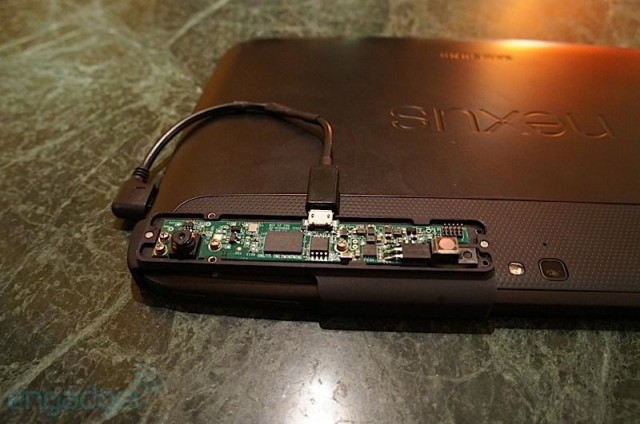3D sensor on the Nexus 10

In addition to the already well-known novelties on Google I / O, the conference showed a truly spectacular development from PrimeSense - the Capri 3D three-dimensional mobile sensor - which brings really impressive features to the concept of “augmented reality”. It can also be assumed that soon something new will be added to the already boring arsenal of “features” on smartphones.
In fact, we are talking about a working prototype of the tablet, assembled on the basis of Nexus 10, which can scan the surrounding space in real time and with high accuracy, thereby creating a three-dimensional model of objects. Kinect prefix has been able to do something similar for a relatively long time (at the same time, the same company - PrimeSense is behind both developments), but here we are talking about a significant reduction in the size of the Capri 3D sensor and the availability of ready-made samples of programs that can demonstrate its capabilities not only for games.
Best of all, of course, the idea of Capri's work comes from a video shot by Engadget reporters in some dark corridor on Google I / O.
The video below, lasting about 8 minutes, shows a number of examples of using the sensor, the SDK for which can already be taken here.
First, a certain augmented reality program is shown, which allows, on the basis of the constructed three-dimensional model of the room where the interview itself was taken, to build its interior by placing and dragging various objects such as chairs or armchairs into it - it’s clear that the program can calculate the intersection of the virtual chair with other model objects. It is more than likely that this is far from all.
Between the conversation, it is also clearly visible that the sensor is able to record the movement of people in real time and obtain the metric characteristics of model objects.
And, finally, it is demonstrated that in the light of recent advances in 3D printing, it can really serve as a revolutionary impetus to its further development. A nearby box was scanned using a sensor and saved as a CAD file, which can be easily printed on a 3D printer. Thus, it is easy to imagine a situation where in the near future the owner of some Nexus 15, seeing the thing he liked on the store counter, can get his phone out of the back pocket of his jeans, quickly receive a CAD file and immediately send it to the 3D printing service with the fact that soon you will receive by mail or pick up some trifle yourself or even something more substantial. And all this without special expensive and bulky 3D scanners.
